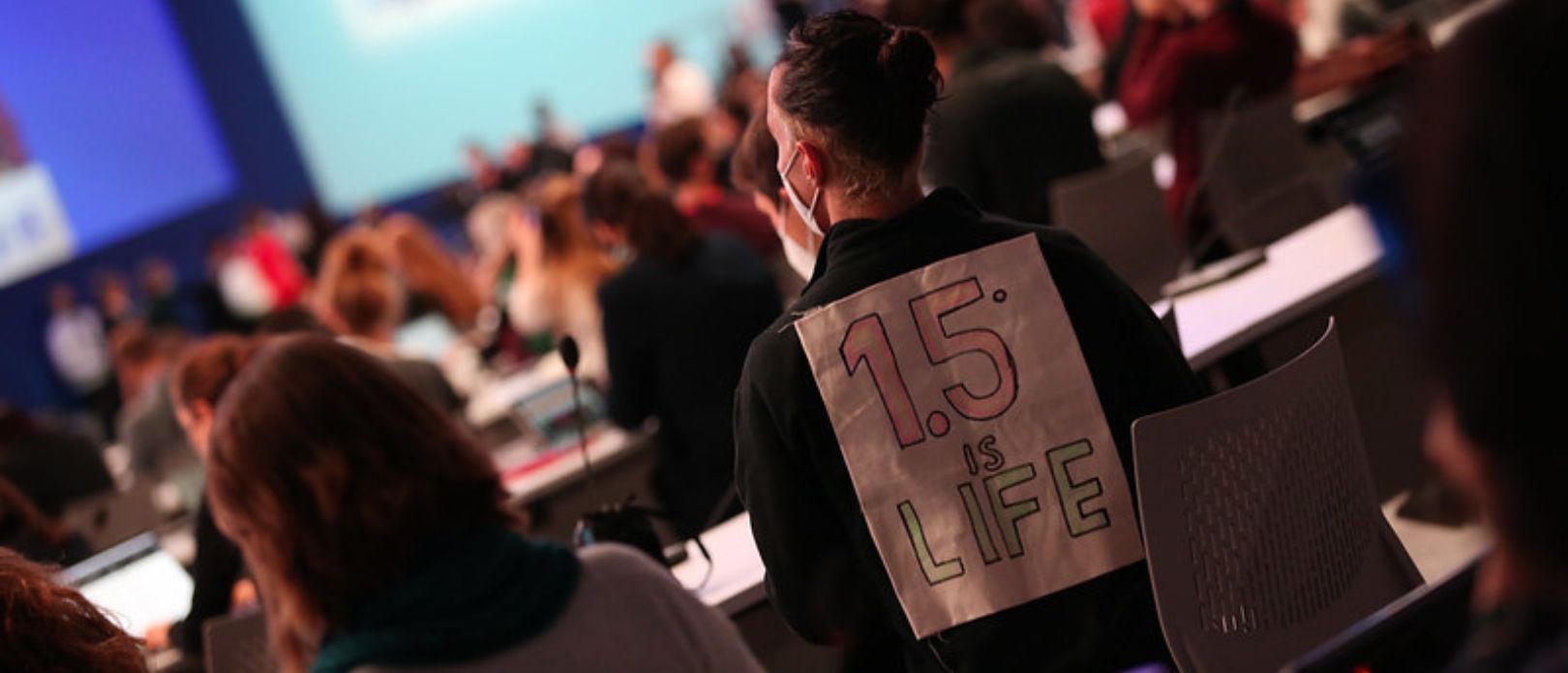COP27
Successes and shortfalls: reflections on COP27

The United Nations Climate Change Conference of 2022, or COP27, took place in Sharm-el-Sheik in Egypt from November 6th to November 18th. In the wake of the conference, we gather reflections from centre staff who were involved on the ground. Photo: Kiara Worth via Flickr.
In the wake of COP27, we gather reflections from centre staff who were involved on the ground
- Addressing the climate crisis requires a full recognition of the importance of the integrity of biodiversity and fulfillment of human rights
- Disappointing negotiations failed to deliver commitment to phase out all types of fossil fuels
- There were some wins for loss and damage funding and the right to a healthy environment
- Explicit connections to the upcoming COP15 on biodiversity were lacking
A CRUCIAL COP: A year on from COP26 in Glasgow, all eyes were on Sharm-el-Sheik in Egypt. The United Nations Climate Change Conference of 2022, or COP27, was anticipated by many as an implementation COP, to translate the aspirations and pledges of previous COPs into action to ensure that the we stand a chance of limiting global warming to 1.5 degrees, in line with the Paris Agreement. But some would argue that even this year’s conference fell short of delivering on the urgent action needed to halt emissions.
The Stockholm Resilience Centre was involved in this year’s COP in various ways, from releasing a special series of our Rethink Talks podcast to having centre researchers participate in panels and report launches on key issues on the conference agenda.
We spoke to Nathanial Matthews from the Global Resilience Partnership, whose secretariat is co-hosted at the centre, and Ashanapuri Hertz and Henrik Brundin from SwedBio, a programme working for biodiversity and equitable development funded by Sida, to gather their reflections on the process and outcomes of COP27.
What is your biggest takeaway from COP27?
Matthews: From a negotiation standpoint, it was disappointing. The lack of any commitment to phase down fossil fuels was a missed opportunity, and the window for 1.5 degrees is now almost closed. There were small wins in terms of shipping and forestry, but the needed connections to the biodiversity COP15 were still not strong enough.
Brundin: From our point of view, the connections to biodiversity were mentioned throughout the conference and during numerous side-events, but the connections need to be strengthened. There was a lot of speculation around the fact that the post-2020 Global Biodiversity Framework has not yet been adopted, but the support for the new Framework’s adoption can be made much clearer.
From our point of view, the connections to biodiversity were mentioned throughout the conference and during numerous side-events, but these connections need to be strengthened.
Henrik Brundin, SwedBio
Hertz: While the intimate links between climate change and biodiversity were underscored on numerous occasions, there is a lot of room for a better understanding of the integrity of our ecosystems, sustainable use, management and governance of biodiversity, human-environment relationship and human rights.
What were some of the successes of the COP?
Matthews: The recognition and funding of loss and damage was a long overdue but important step - the COP would have failed without it. What remains to be seen is how this funding is devolved and if it will reach those who deserve it the most.
Hertz: We at SwedBio always have human rights as our entry point. This year, the right to a clean, healthy and sustainable environment has been made explicit, if compared with the Glasgow Climate Pact. Still, the language can be made stronger than just “…respect, promote and consider...”. These rights must be properly recognised, ensured and protected.
The recognition and funding of loss and damage was a long overdue but important step… the COP would have failed without it.
Nathanial Matthews, Global Resilience Partnership
How were you involved on the ground?
Brundin: Beyond supporting our partners, SwedBio co-convened a pavilion event together with the Secretariat of the Convention on Biological Diversity and International Union for Conservation of Nature (IUCN). The event focused on how an effectively implemented Ecosystem-based Adaptation (EbA) can drive progress in achieving the SDGs.
Matthews: The role of the Global Resilience Partnership as a convenor and knowledge broker was cemented in the resilience space with another successful Resilience Hub and through our support to the actions from the Marrakesh Partnership, Race to Resilience and other campaigns, initiatives and partnerships at COP. GRP’s role in supporting the development and launch of The Sharm-El-Sheikh Adaptation Agenda was important, as well as launching the PREPARE Call to Action.
Any final reflections?
Hertz: This COP, we saw increased participation from our partners from the global South. We will continue supporting them and their advocacy in better linking climate change and biodiversity, while respecting and protecting human rights, including the rights of indigenous peoples, local communities, women and girls and youth.
We will continue supporting our partners from the global South and their advocacy in better linking climate change and biodiversity.
Ashanapuri Hertz, SwedBio
Brundin: COP27 took place against the backdrop of detention of numerous human rights defenders. The designated area for non-accredited actors was set far away from the venue. The green zone which was organized by the presidency and designed for civil society manifested as an art installation park and an expo for actors from the Egyptian private sectors. But civil society and the NGO sector were nowhere to be seen.
Matthews: All in all, we have come a long way, but we have "miles to go before we sleep", as Frost's poem goes.
Revisit COP27
To read more about how Stockholm Resilience Centre was involved in COP27, check out our engagements during COP. The sessions from the Resilience Hub are all available on their YouTube page. You can also revisit our Rethink Talks podcast COP27 special series to dive into some of the issues at the heart of resilience thinking and global change.
For more information about the Global Resilience Partnernship, follow their Twitter @grp_resilience or their website.
To learn more about SwedBio and their partners, make sure to follow their work on Twitter @SwedBio or visit their website.

Nate Matthews is the CEO of the Global Resilience Partnership co-hosted by the centre.

Ashanapuri Hertz is a programme officer at SwedBio.

Henrik Brundin is the director of SwedBio at Stockholm Resilience Centre.








